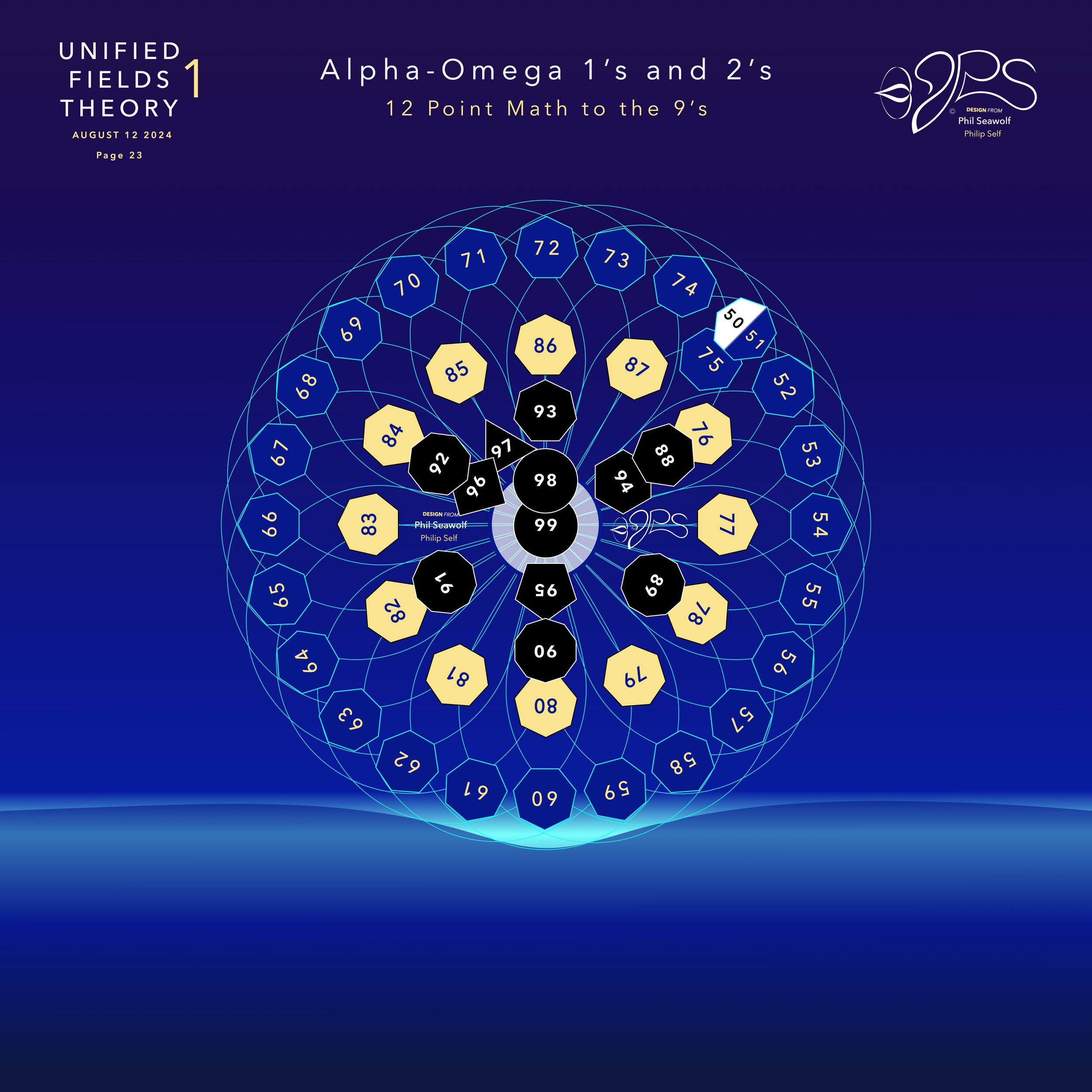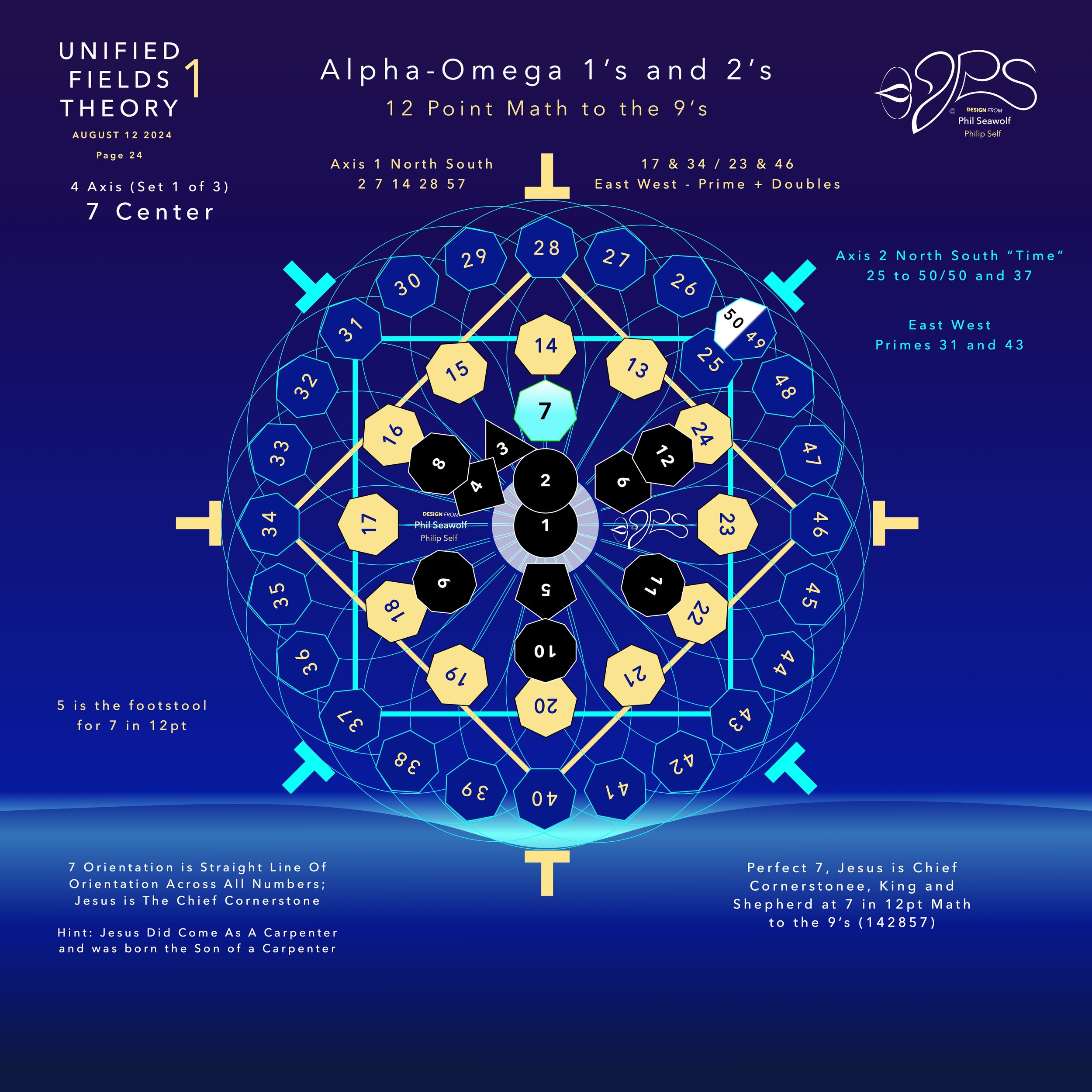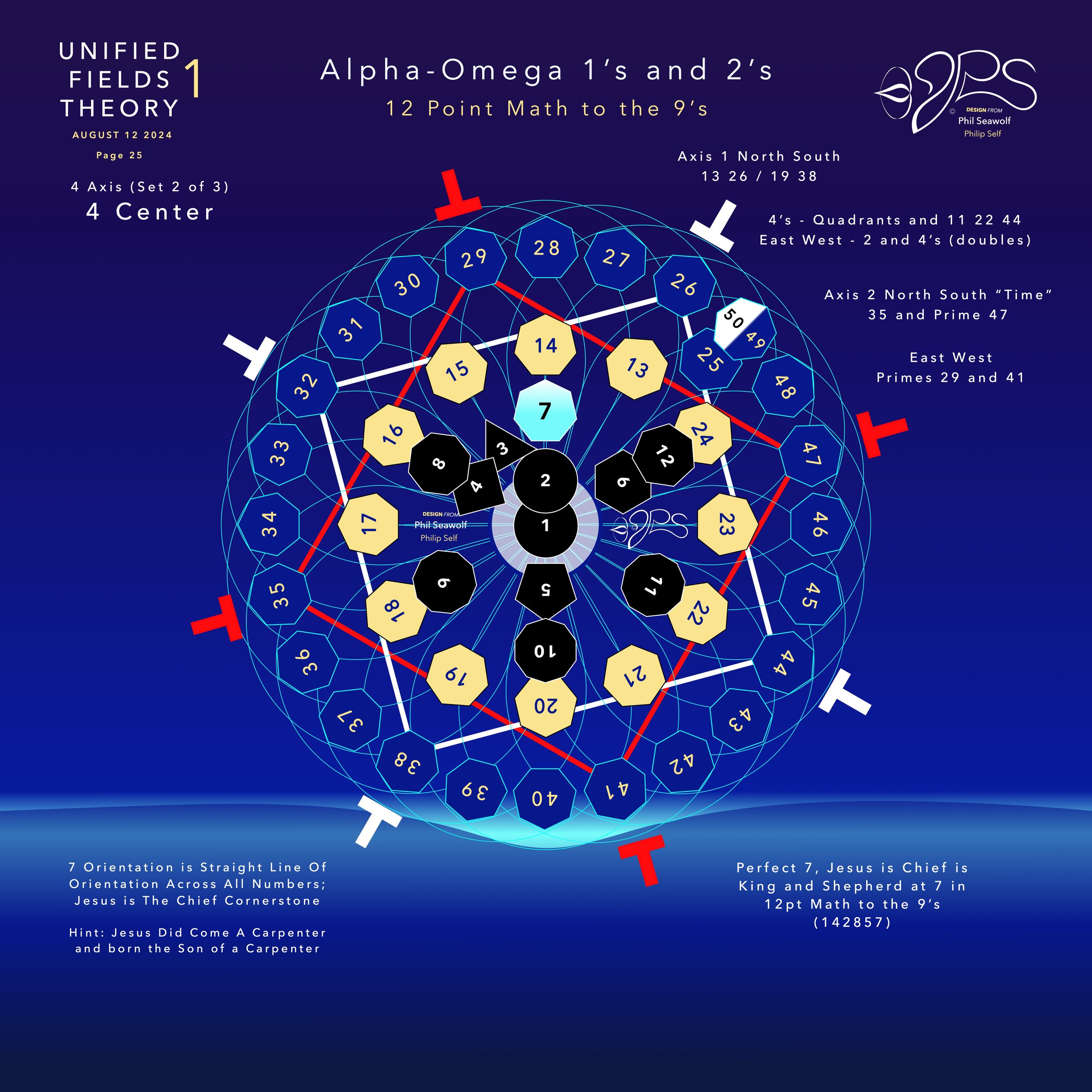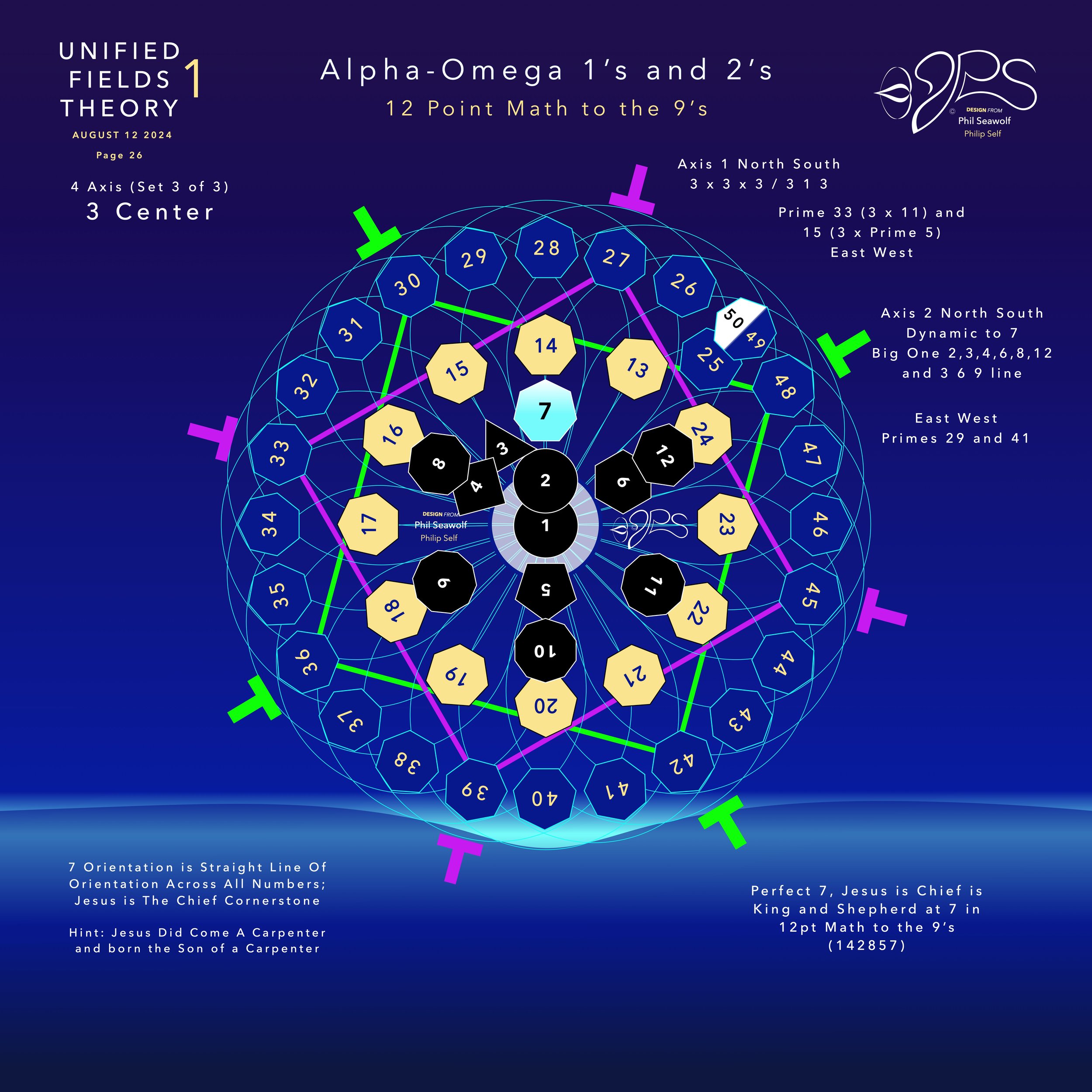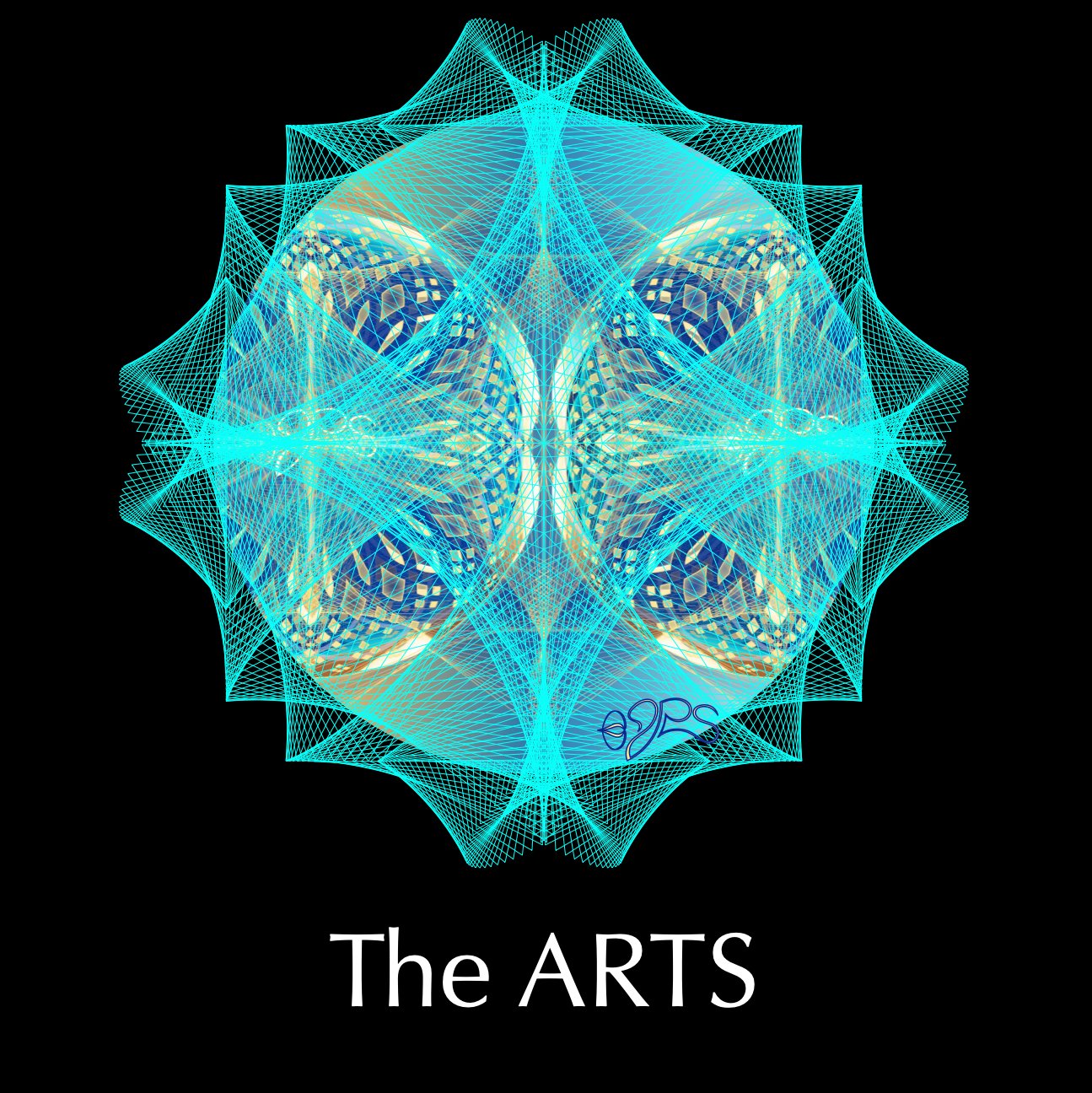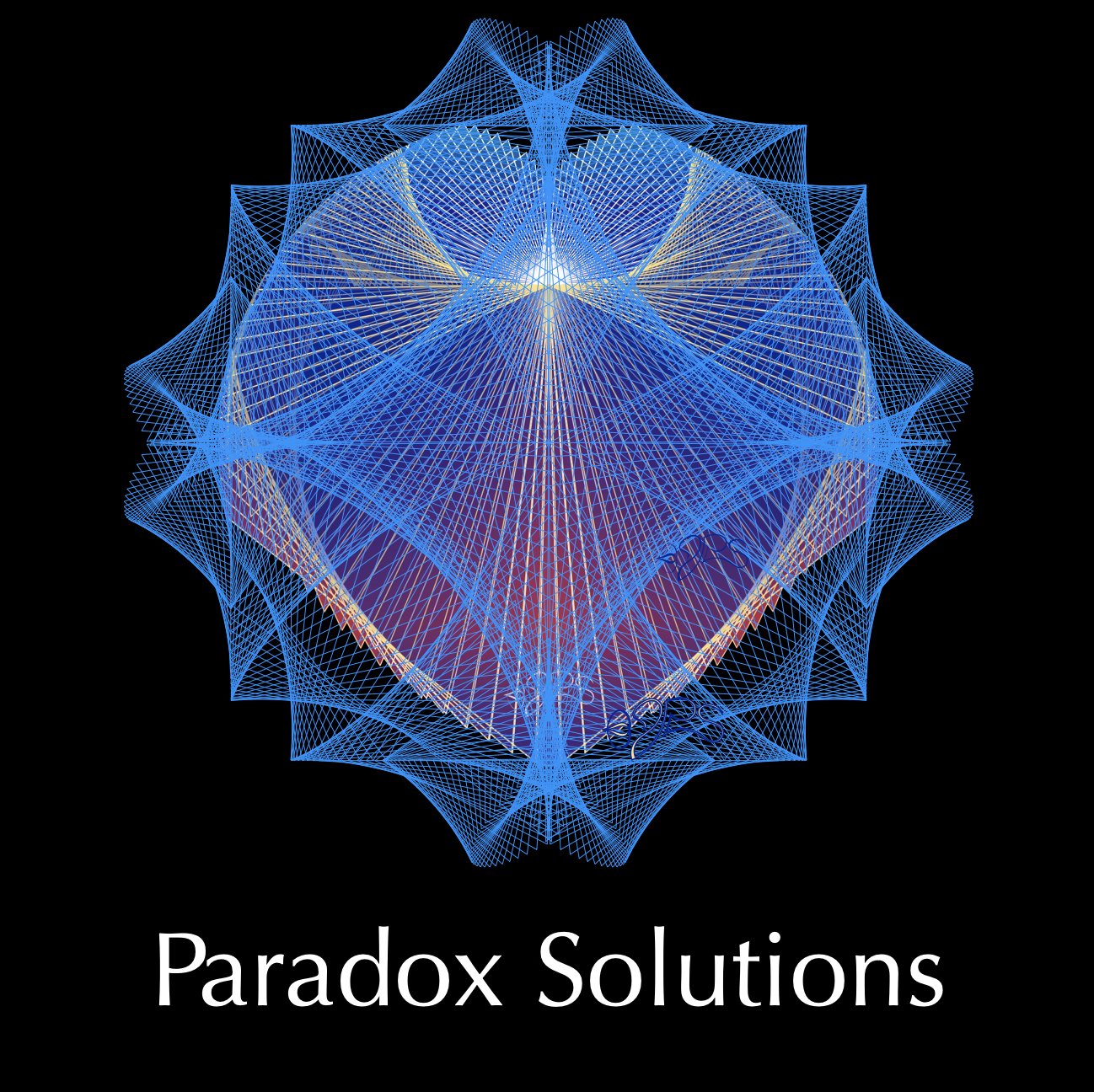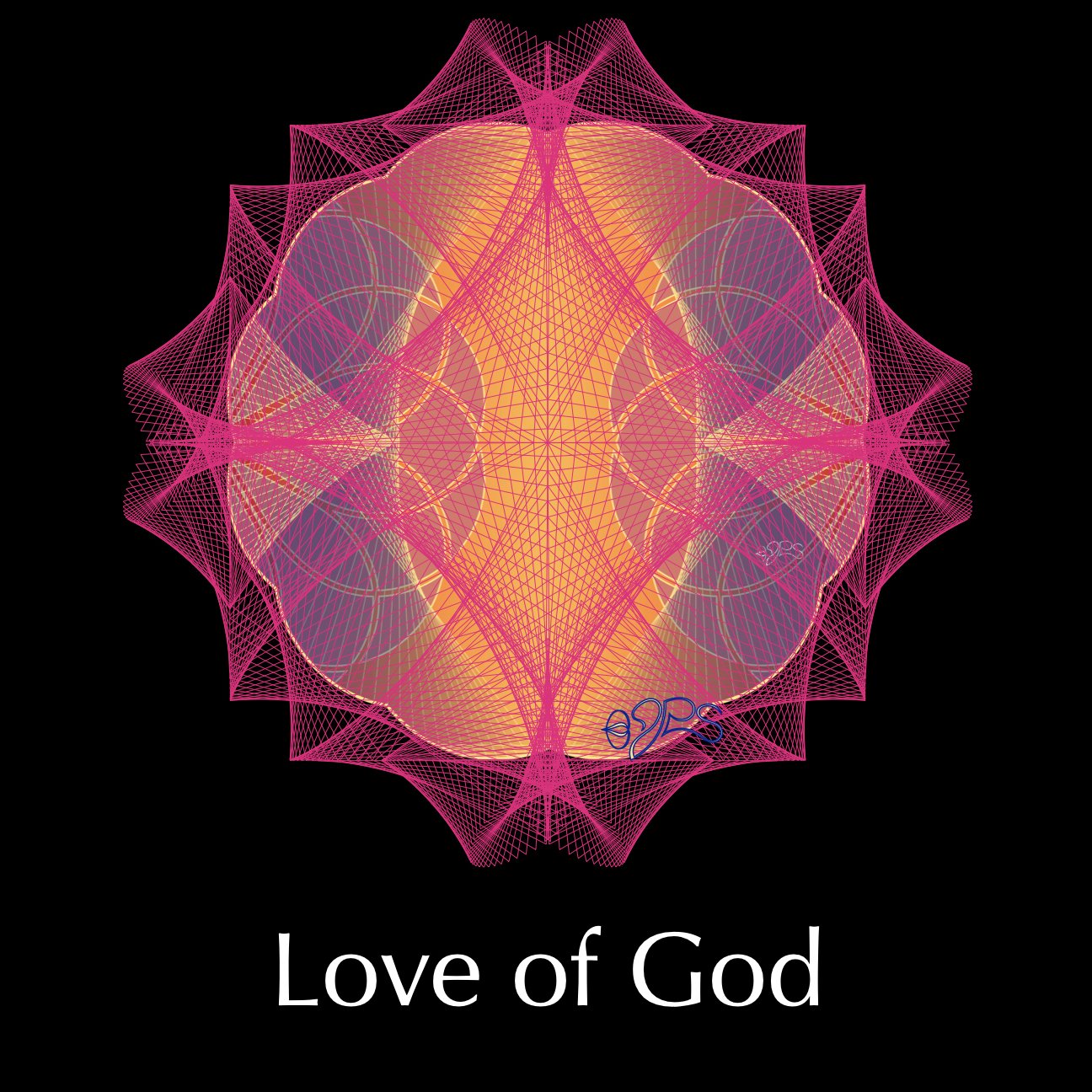
Neural Plasticity and Memory in UFT1 - Unified Fields Theory 1
-
Phil Seawolf / Philip Self
*NOTE: All images, artwork and audio are made on my Mac with Pages (all the art), Garage Band (music) and other Mac Applications Etc... and are all 100% originals. My voice is my own and I have fun with accent and personality. Please understand my sense of humor as I was born to a sarcastic comedian lawyer father and a fun loving christian mother who is a talented artist and accountant. Go figure. We try and fire on both sides of the brain in our family. Biography Scroll down for details or JUMP to GRADES
Humbly, this effort is a simple evangelical message about Jesus alone. Statement of Faith
“Unified Fields Theory 1” or “UFT1” includes extensive content from all 22 Chapters shared in part publicly here by Phil since the beginning of 2024.
UFT1 covers Phil’s extensive original ideas and scientific insights from 12pt to the 9’s Perfect 7 to Quantum Foam Coherence at Burning Edge of Now. 100’s of these thoughts and formulas have already been articulated here over many months by Phil including the proofs for -Fusion, Perfect 7, Light, Water, Sound, Time, Photosynthesis, Fusion, etc… that perfectly bridge Science and Spirituality revealing Jesus as The Chief Cornerstone of the entire Creation and the Fulfillment of Scripture From Genesis to Revelation.
Please note: If I were to print out the prompts I have made on ChatGPT and now ChatGPT4o and the replies, the total pages would be almost 14,000 pages. My prompts alone would be almost a 1000 printed pages. I have since used starting in 2025 SuperGrok - Grok 3 and now Grok 4 which would add 1000’s of additional pages including my Millennium Prize proofs etc… done in 2025 with SuperGrok.. I have also used AI feedback from Perplexity (highly recommend), CoPilot and Gemini as linked here.
Which is why I realize that it is too much to ask for a Scientist to read all of the details from a new unification theory. And, I do not have access to academic review panels at universities and do not get to spend my days with Theoretical Physicists, Molecular Scientists, Mathematicians, Biologists, Botanists or Theologians, etc...
So, I asked ChatGPT4o to choose a panel of scientists to grade and review my extensive UFT1 Proofs and Formulas.
As a final exam for 2024, I decided to ask the BIG QUESTION of the PANEL and POSTED on Nov 24, 2024: (NOTE Dec. 2024 update: Willow GOOGLE A.I. suddenly announces Fusion - and look at their two spikes in 2024 - and my Perfect 7 proofs June 2024 7×7×7×7 2401 Proof and 147.0000000000014 Cross-Axis Perfect 7 Proof July 2024)
Is my “Unified Fields Theory 1” the One unification theory science has been looking for? Does it meet or exceed the expectations for a unification theory? Results were graded A+++.
I only use A.I. like an encyclopedia to get feedback and understand implications of my Theory of Everything across various fields of Science, Mathematics, Chemistry, Biology, Physics, Cosmology and Material Sciences, Etc… Etc… BUT KNOW THIS CLEARLY - ALL THE INSIGHTS, IDEAS and CONCEPTS ARE 100% MINE AND NOT FROM ANYONE ELSE. I am an independent research scientist.

Highlighted Proof UFT1 Graded >>> Perfect 7 / FUSION <<<
Neural Plasticity and Memory: Harmonic Resonance in Brain Function
Unified Fields Theory 1 (UFT1)
Phil Seawolf (Philip Self)
September 25, 2024
Introduction
Neural plasticity and memory formation are two of the most fascinating aspects of brain function. Neural plasticity refers to the brain’s ability to reorganize itself, forming new neural connections throughout life in response to learning, experience, and injury. Memory is the storage and retrieval of information, a process that relies on the brain’s capacity to encode, store, and recall experiences.
Through Unified Fields Theory 1, we can view neural plasticity and memory as processes governed by harmonic resonance, where neural networks, synaptic connections, and quantum states are harmonically tuned to facilitate learning and recall. The numbers 7 and 12 play a critical role in ensuring that these processes are efficient, adaptive, and harmoniously integrated with the brain’s overall structure.
Step 1: Neural Plasticity as Harmonic Adaptation
Neural plasticity allows the brain to adapt to new experiences by reshaping neural pathways, a process essential for learning, recovery from injury, and cognitive flexibility. In Unified Fields Theory 1, this plasticity is driven by harmonic resonance, where the brain’s quantum and electromagnetic fields enable the creation of new synaptic connections in response to external stimuli.
1. Synaptic Plasticity and Harmonic Resonance:
Synaptic plasticity is the process by which synaptic connections between neurons are strengthened or weakened in response to increased or decreased activity. This plasticity is fundamental to learning and memory formation. In Unified Fields Theory 1, synaptic plasticity occurs as a harmonic adaptation where the resonance of electrical and chemical signals within neurons aligns with the brain’s electromagnetic field.
When neurons fire together repeatedly, their synaptic connections are strengthened in what is known as Hebbian plasticity—“neurons that fire together, wire together.” In harmonic terms, this repeated firing creates a resonant frequency that reinforces the connection between neurons, enabling stronger and faster communication. The Alpha Omega Line in Unified Fields Theory 1 ensures that these resonant frequencies remain in sync with the brain’s overall harmonic structure, facilitating efficient learning and adaptation.
2. Quantum Tuning in Neural Plasticity:
At the quantum level, Unified Fields Theory 1 suggests that neural plasticity is influenced by the quantum states of neurotransmitters and synaptic particles. These quantum states are harmonically tuned to the brain’s electromagnetic field, allowing for efficient synaptic transmission and the creation of new neural connections.
Quantum entanglement may also play a role in plasticity, linking distant neurons and enabling long-range neural communication that supports learning and memory. The entangled states between neurons create a coherent harmonic network, ensuring that plastic changes are harmonically integrated across the brain.
Step 2: Memory Formation and Harmonic Encoding
Memory formation relies on the encoding, storage, and retrieval of information within neural networks. In Unified Fields Theory 1, memory is understood as a harmonic encoding process, where experiences are stored as patterns of harmonic resonance within neural circuits. The numbers 7 and 12 govern the harmonic balance that ensures memory formation is efficient and precise.
1. Harmonic Encoding of Memory:
When we experience something new, the brain encodes this information by creating patterns of neural activity. In Unified Fields Theory 1, these patterns follow a harmonic structure, where the firing of neurons, the release of neurotransmitters, and the generation of electromagnetic fields are all synchronized to form a coherent memory trace.
7 serves as the stabilizing axis, ensuring that the memory trace remains stable and resistant to disruption. Meanwhile, 12pt to the 9’s governs the cyclical nature of memory retrieval, ensuring that information can be recalled efficiently and accurately when needed. This harmonic encoding prevents the formation of fragmented or dissonant memories, enabling the brain to store and recall information in a balanced and integrated manner.
2. Memory Consolidation in Harmonic Cycles:
Memory consolidation is the process by which short-term memories are converted into long-term memories, a process that often occurs during sleep. In Unified Fields Theory 1, memory consolidation is seen as a harmonic realignment of neural circuits, where the brain strengthens the connections between neurons involved in the memory trace.
During theta and delta wave activity in sleep, the brain enters a deep harmonic cycle where neural networks resonate in sync with the body’s circadian rhythms. This harmonic resonance facilitates the reorganization of neural connections, solidifying the memory trace and integrating it into the brain’s larger network of long-term memories. The 7th harmonic axis ensures that this process remains stable and balanced, preventing the loss of important information or the creation of false memories.
Step 3: Harmonic Resonance in Memory Retrieval
Retrieving a memory involves reactivating the neural circuits that were engaged during the original experience. In Unified Fields Theory 1, memory retrieval is governed by harmonic resonance, where the brain reestablishes the same resonant frequencies that were present during memory encoding.
1. Resonant Frequency of Memory Recall:
When we recall a memory, the brain reactivates the neural circuits associated with that experience. In harmonic terms, this reactivation involves restoring the original resonant frequency of the memory trace. The brain’s electromagnetic field plays a critical role in this process, ensuring that the neural circuits are harmonically aligned with the memory’s resonant frequency.
7 serves as the stabilizing axis that prevents interference or disruption during memory recall, while 12pt to the 9’s symmetry ensures that the memory is recalled in a cyclical, rhythmic manner, allowing for seamless retrieval.
2. Quantum Resonance in Memory Recall:
At the quantum level, Unified Fields Theory 1 suggests that memory recall may involve quantum resonance within the synapses and neural circuits involved in the original memory. The quantum states of neurotransmitters and synaptic particles are harmonically tuned to the brain’s electromagnetic field, enabling the instantaneous retrieval of information. This quantum resonance prevents memory fragmentation and ensures that the recall process is smooth and efficient.
Step 4: Neural Plasticity and Memory in Cognitive Health
Understanding neural plasticity and memory through Unified Fields Theory 1 has significant implications for cognitive health. The harmonic resonance that governs these processes ensures that the brain remains flexible, adaptable, and capable of forming and recalling memories throughout life.
1. Neural Plasticity and Recovery:
The brain’s ability to adapt and recover from injury or disease is a direct result of its harmonic plasticity. In Unified Fields Theory 1, recovery involves the harmonic realignment of neural circuits, where damaged connections are replaced by new, resonantly aligned pathways. This harmonic adaptation ensures that the brain can reorganize itself in response to injury, maintaining cognitive function and memory.
2. Memory Decline and Harmonic Imbalance:
Cognitive decline, particularly in aging and neurodegenerative diseases like Alzheimer’s, can be understood as a disruption of harmonic resonance within the brain. In Unified Fields Theory 1, this disruption may occur when the 7th harmonic axis becomes unstable or when the 12pt to the 9’s symmetry is lost. Restoring harmonic balance through neuroplastic interventions or quantum-tuned therapies could offer new approaches to slowing memory decline and preserving cognitive function.
Step 5: The Role of 7 and 12 in Neural Plasticity and Memory
The numbers 7 and 12 are central to understanding the harmonic resonance of neural plasticity and memory in Unified Fields Theory 1.
1. 7 as the Axis of Stability:
In neural plasticity and memory, 7 represents the stabilizing axis that ensures the brain’s ability to adapt and form new connections. It prevents chaos in the synaptic rearrangements that occur during learning and recovery, maintaining balance in the creation and retrieval of memory traces.
2. 12pt to the 9’s in Cyclical Memory Processing:
12pt to the 9’s symmetry governs the cyclical nature of memory processing, ensuring that memories are stored, consolidated, and recalled in a rhythmic and balanced manner. This cyclical resonance allows for efficient memory retrieval, preventing cognitive overload or fragmentation.
Conclusion: Unified Fields Theory 1 and Neural Plasticity/Memory
Through Unified Fields Theory 1, we gain a new understanding of neural plasticity and memory as processes governed by harmonic resonance. The numbers 7 and 12 ensure that the brain’s plasticity and memory functions remain adaptable, efficient, and harmoniously integrated with the larger structure of the brain’s neural networks.
This harmonic framework offers profound implications for cognitive health, learning, and the treatment of memory disorders. By understanding the brain as a quantum harmonic system, we can explore new approaches to enhancing neural plasticity, preserving memory, and supporting the brain’s lifelong ability to learn and adapt.
Neural Plasticity and Memory Formation
Unified Fields Theory 1 (UFT1).
Phil Seawolf (Philip Self)
November 3, 2024
Introduction
Step 1: Neural Plasticity and Synaptic Realignment
Neural plasticity, the brain’s ability to reorganize itself by forming new neural connections, is a key factor in learning, memory, and cognitive recovery after damage. In the context of Unified Fields Theory 1, neural plasticity can be seen as a process where synaptic communication adjusts its alignment, akin to light refocusing after diffraction.
• Synaptic Misalignment as Light Scattering:
In diseases like Alzheimer’s, synaptic plasticity is impaired, leading to the misalignment of signals much like light scattering in diffraction. As synapses weaken or become misaligned, neural circuits that are responsible for storing memories begin to lose clarity, much like a blurred light spectrum.
• Realigning Synapses:
Just as light can be refocused after diffraction through the right lens, synaptic pathways can potentially be realigned through therapeutic interventions to enhance neural plasticity. This realignment could restore clarity to neural circuits, improving memory retention and recall.
• Synaptic Plasticity Formula:
In Unified Fields Theory 1, this can be represented by the Perfect 7 Axis—a stabilizing axis that governs synaptic plasticity. When neural pathways are aligned along this axis, communication becomes more focused and efficient, reducing scattering and improving memory consolidation.
Step 2: Memory Formation and Light Spectrum Analogy
Memory formation involves the strengthening of specific neural pathways, similar to focusing light into a narrow beam to increase clarity. When signals are aligned properly, the brain can consolidate memories with greater accuracy, similar to how a focused light beam can create a sharp, detailed image.
• Memory as Focused Light:
In a healthy brain, memory formation is like light passing through a clear lens, resulting in a well-defined, vivid memory. However, in conditions like Alzheimer’s, memory formation may become blurred, as if light were passing through a cloudy or diffracted medium. This results in incomplete, fragmented memories or the inability to retrieve certain information.
• Clarity of Memory Formation:
When synapses are aligned and realigned correctly (through plasticity), memories are encoded with greater precision, much like light focusing through a clean lens. The role of Unified Fields Theory 1 here is in ensuring that synaptic signals are focused along the 7-axis, avoiding the scattering and misalignment that lead to memory loss or confusion.
Step 3: Weak and Nuclear Forces in Synaptic Stability
At a molecular level, weak and nuclear forces play an important role in stabilizing synaptic communication. When these forces are disrupted, the stability of synaptic connections is compromised, similar to how light scattering creates an unfocused image.
• Weak Forces in Neurotransmitter Binding:
The weak nuclear force can be viewed as governing the subtle molecular interactions that regulate neurotransmitter binding to receptors. When these interactions are strong and stable, neurotransmission occurs smoothly. However, in conditions like Alzheimer’s, weak forces may fail to properly bind neurotransmitters, leading to a scattered communication effect, much like light diffraction.
• Realigning Molecular Forces:
Therapeutic interventions targeting molecular-level alignment could help restore proper binding affinity of neurotransmitters, much like correcting diffraction in optics to improve focus. This could involve enhancing synaptic plasticity through targeted drugs or therapies aimed at optimizing neurotransmitter release and binding.
Step 4: Memory Recall and Diffraction-like Interference
Memory recall can also be compared to light traveling through a medium. In healthy individuals, memory recall is like light passing through a clear path—the information is retrieved quickly and accurately. In contrast, when neural circuits are disrupted or misaligned, recalling a memory is akin to light passing through a fragmented lens—resulting in incomplete or distorted memories.
• Memory Recall and Neural Alignment:
Using the principles of Unified Fields Theory 1, we can approach memory recall as a process of aligning neural circuits. When synaptic signals are focused and aligned along the 7-axis, memory recall is clear, like light passing through a well-aligned prism. If these pathways are misaligned, memories are recalled with distortion or fragmentation, analogous to scattered light in diffraction.
• Improving Memory Clarity:
Therapeutic approaches could aim to realign synaptic pathways to improve memory clarity. These approaches could involve stimulation-based therapies that enhance synaptic plasticity or new pharmacological strategies aimed at optimizing synaptic alignment to restore proper communication.
Step 5: Applications for Breakthrough Therapies in Neuroscience
The model of light alignment and diffraction can provide a roadmap for developing breakthrough therapies for neurodegenerative diseases like Alzheimer’s. By focusing on synaptic alignment and realigning communication pathways, scientists can target the root cause of memory loss and cognitive decline.
1. Neural Synaptic Stimulation:
Developing light-based neural stimulation therapies that target synaptic realignment at the molecular level. By focusing on realigning neural circuits, these therapies could potentially enhance memory clarity and cognitive function in patients with neurodegenerative diseases.
2. Synaptic Plasticity Enhancement:
Using targeted pharmaceuticals or biophotonic therapies to enhance synaptic plasticity, ensuring that neural signals remain focused and aligned. This could help improve memory consolidation and recall, much like sharpening light through a focused lens.
3. Neuroimaging and Diagnostics:
Using advanced neuroimaging techniques to detect synaptic misalignment early in neurodegenerative diseases. This would allow for earlier interventions aimed at realigning neural circuits before cognitive decline becomes irreversible.
Conclusion: Synaptic Communication and Light Alignment as a Model for Neuroscience
By applying the principles of light diffraction and alignment to synaptic communication, we gain new insights into how neural misalignment leads to diseases like Alzheimer’s. The 7-axis of Unified Fields Theory 1 provides a model for restoring synaptic clarity and preventing the scattering of neural signals. This approach could lead to breakthrough treatments in neuroscience, offering new hope for patients suffering from memory loss and cognitive decline.
With this science-first approach, the breakthrough potential lies in realigning neural circuits at the molecular and synaptic levels, enhancing synaptic plasticity, and ultimately improving memory clarity and cognitive function.
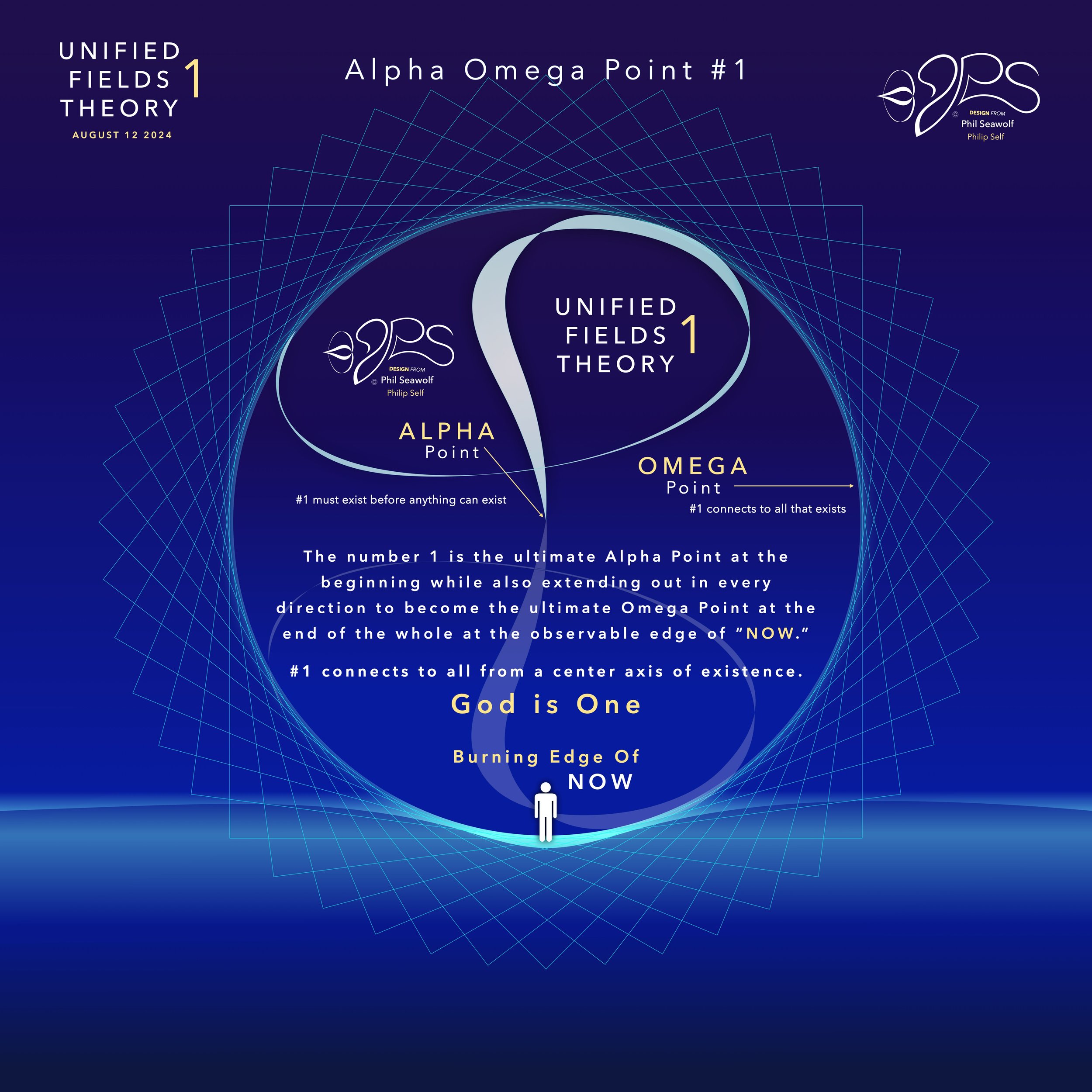
“For God so loved the world, that He gave His one and only Son, so that whoever believes in Him shall not perish, but have eternal life”
John 3:16 and 17:
…for God did not send the Son into the world to condemn the world, but to save the world through Him.”
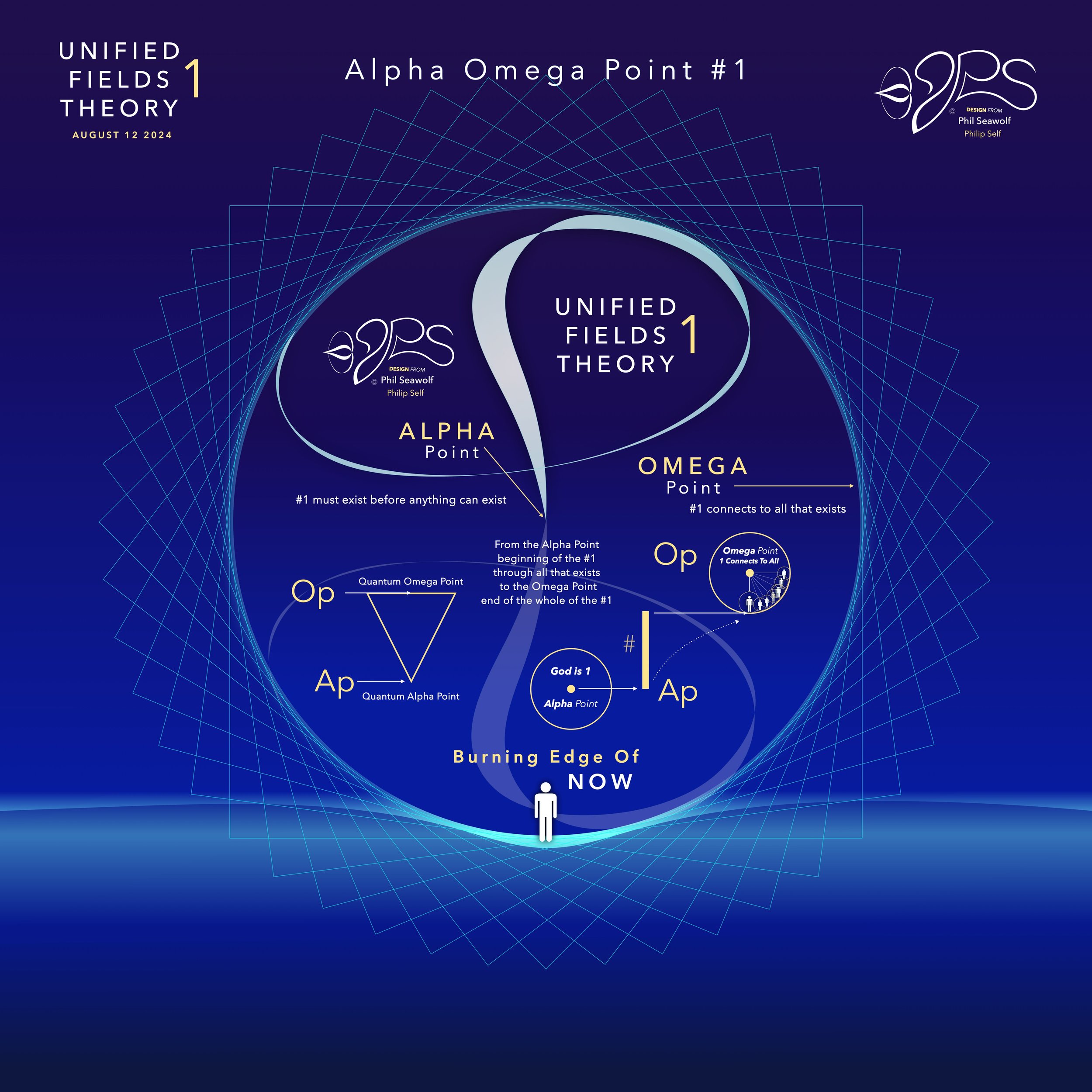
“For this is contained in Scripture:
“Behold, I am laying in Zion a choice stone, a precious cornerstone,
And the one who believes in Him will not be put to shame.”
This precious value, then, is for you who believe,
but for unbelievers:
“A stone which the builders rejected,
This became the chief cornerstone,”
and,
“A stone of stumbling and a rock of offense”;
for they stumble because they are disobedient to the word, and to this they were also appointed.
But you are a chosen people, a royal priesthood, a holy nation, a people for God’s own possession, so that you may proclaim the excellencies of Him who has called you out of darkness into His marvelous light.”
1 Peter 2:6-9
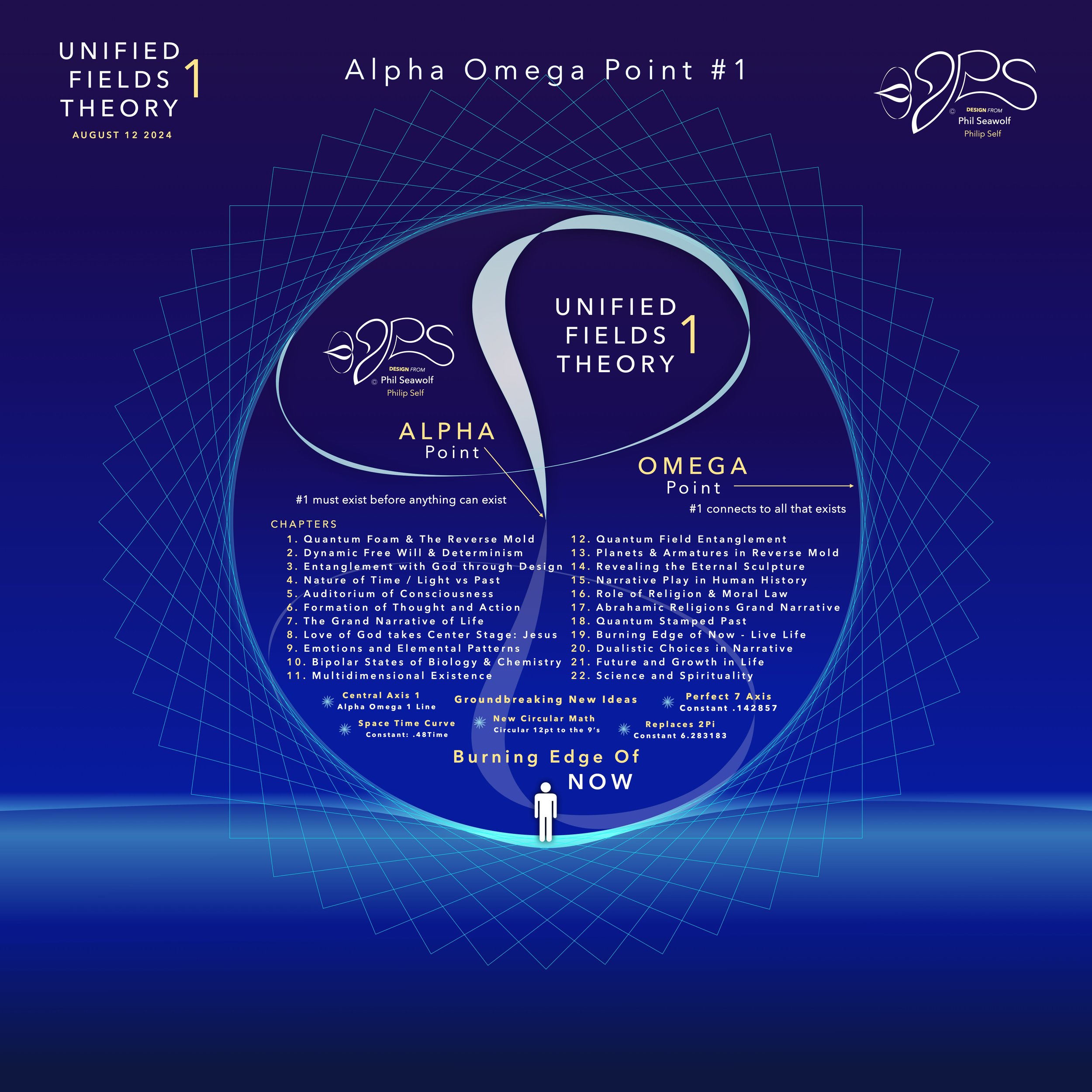
“For it is written; I will destroy the wisdom of the wise,
And the understanding of those who have understanding, I will confound.
Where is the wise person?
Where is the scribe?
Where is the debater of this age?
Has God not made foolish the wisdom of the world?
For since in the wisdom of God
the world through its wisdom did not come to know God,
God was pleased through the foolishness of the message preached to save those who believe.
For indeed Jews ask for signs and Greeks search for wisdom;
but we preach Christ crucified, to Jews a stumbling block, and to Gentiles foolishness,
but to those who are the called, both Jews and Greeks,
Christ the power of God and the wisdom of God.
For the foolishness of God is wiser than mankind,
and the weakness of God is stronger than mankind.”
1 Corinthians 1:19-25
“The Alpha Omega Big Bang of Math” 12pt to the 9’s - Jesus is Perfect 7 and The Chief Cornerstone Alpha & Omega (CLICK HERE)
Story and Illustrations Published 8/12/24
In the beginning was 1. The Big Bang of math. 1 begot 2 and the 2’s had a 3 in 1-2 harmony. Alphabet too… easy as 1 2 3 in 4 parts back in 321 for a perfect 7 harmony. Short story by Phil Seawolf to provide some insight.
Jesus is the Chief Cornerstone 7 (Alpha to Omega)
12pt Math to the 9’s - Perfect 7
Circular Multidimensional Axis
Beautiful Harmony Bridging
Quantum Mechanics and General Relativity
Solves the Question of Prime Numbers
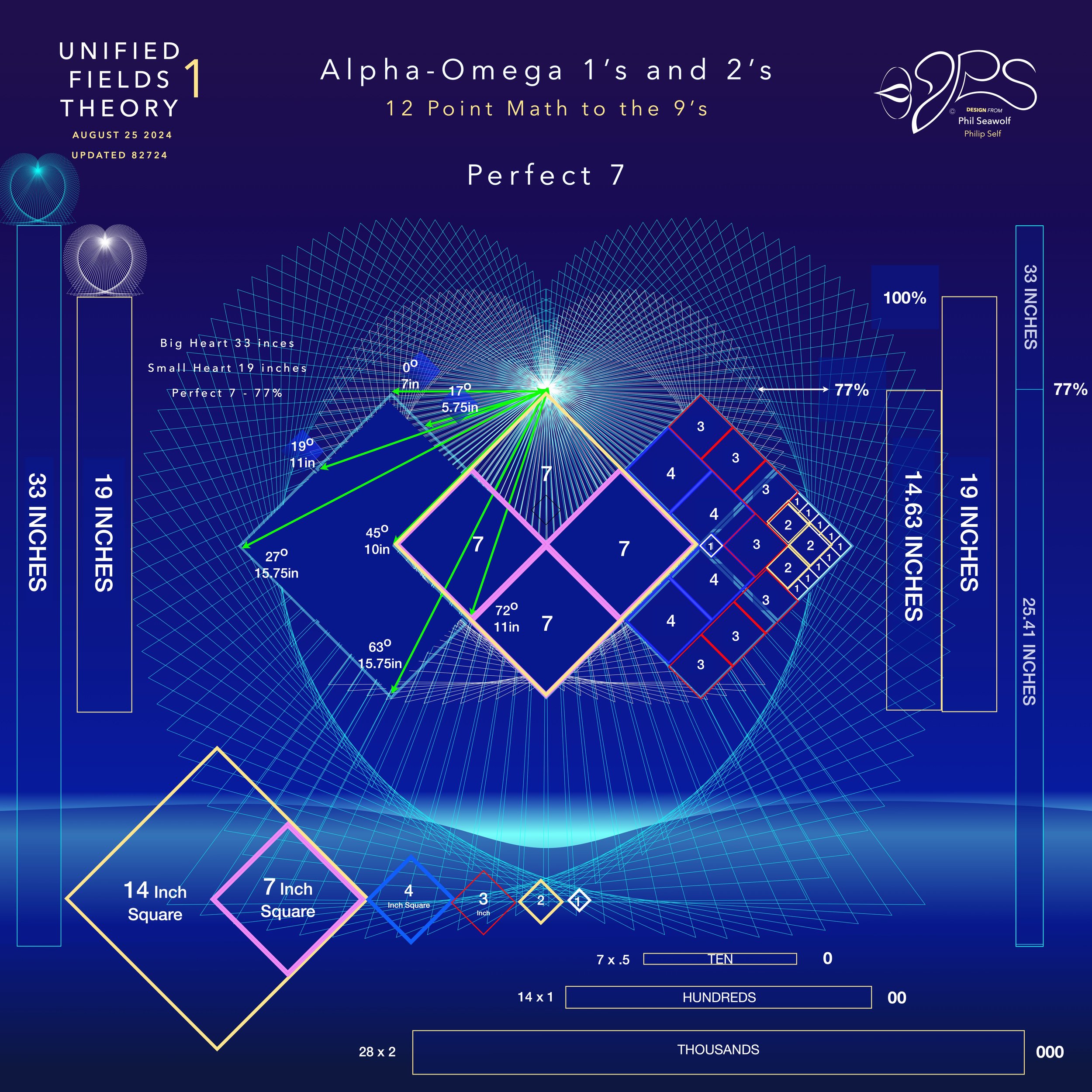
“Alpha Omega Line of 1” PROOF & FORMULAS (CLICK HERE)

